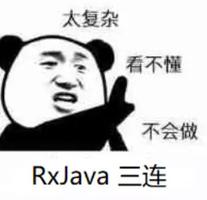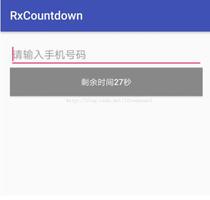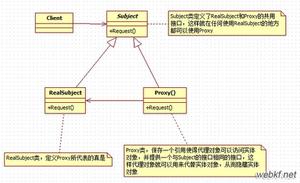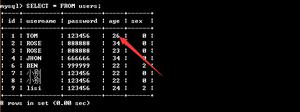如何刷新改进2/rxJava中的ACCESS-TOKEN
我发出请求(任何授权,注册等),然后我发现我需要更新ACCESS-TOKEN,即得到错误401。如何刷新改进2/rxJava中的ACCESS-TOKEN
这里是授权请求:
BaseApplication.getApiClient() .signIn(accessToken, body)
.subscribeOn(Schedulers.io())
.observeOn(AndroidSchedulers.mainThread())
.subscribe(new SingleObserver<UserProfile>() {
@Override
public void onSubscribe(Disposable d) {
Log.d("-- SignInOnSubscribe", "Subscribed!");
}
@Override
public void onSuccess(UserProfile userProfile) {
if (userProfile.getErrorDetails() != null) {
onSignInFinishedCallback.onLoginFailure(userProfile.getErrorDetails());
Log.d("-- SignInOnError", userProfile.getErrorDetails());
} else {
onSignInFinishedCallback.onLoginSuccess(userProfile);
profileRepository.updateUserProfile(userProfile);
Log.d("-- SignInOnSuccess", userProfile.getName());
}
}
@Override
public void onError(Throwable e) {
Log.d("-- SignInOnError", e.getMessage());
if (e.getMessage().equals(Constants.CODE_UNAUTHORIZED)){
// Action on error 401
}
onSignInFinishedCallback.onLoginFailure(e.getMessage());
}
});
的API请求:
@POST("/api/login") Single<UserProfile> getAccessToken(@Body Map<String, String> requestBody);
@POST("/api/abonent/login")
Single<UserProfile> signIn(@Header("X-ACCESS-TOKEN") String accessToken,
@Body Map<String, String> requestBody);
例如,该授权要求是request 1,接收TOKEN是query 2该请求。
问题:我如何更新TOKEN如果我query 1得到一个错误和query 2成功后,回做query 1?
回答:
我不确定您是如何收到新令牌的,因为返回类型为getAccessToken()的是Single<UserProfile>。我想这应该是Single<String>代替。也许这是不是这种情况,您会收到令牌在页眉或作为UserProfile领域。在这两种情况下,你可以从下面的解决方案的想法,把它调整到你的情况。
的方法是,我们从原来的一个一个使用令牌存储装置,它拥有最先进的最新令牌创建一个新的观测。我们处理使用compose和onErrorResumeNext使令牌刷新请求时,新令牌保存到令牌存储装置,和原来的请求被重新尝试新的令牌这一次的401错误。
如需更详细的说明,请参见下面的代码中的注释:
public void signIn(final Map<String, String> body) { Single
// Wrap the original request with a "defer" so that the access token is
// evaluated each time it is called. This is important because the refreshed
// access token should be used the second time around.
.defer(new Callable<SingleSource<UserProfile>>() {
@Override
public SingleSource<UserProfile> call() throws Exception {
return BaseApplication.getApiClient()
.signIn(accessTokenStore.getAccessToken(), body);
}
})
// Compose it with a transformer that refreshes the token in the token store and
// retries the original request, this time with the refreshed token.
.compose(retryOnNotAuthorized(body))
// The code remains the same from here.
.subscribeOn(Schedulers.io())
.observeOn(AndroidSchedulers.mainThread())
.subscribe(new SingleObserver<UserProfile>() {
@Override
public void onSubscribe(Disposable d) {
Log.d("-- SignInOnSubscribe", "Subscribed!");
}
@Override
public void onSuccess(UserProfile userProfile) {
if (userProfile.getErrorDetails() != null) {
onSignInFinishedCallback.onLoginFailure(userProfile.getErrorDetails());
Log.d("-- SignInOnError", userProfile.getErrorDetails());
} else {
onSignInFinishedCallback.onLoginSuccess(userProfile);
profileRepository.updateUserProfile(userProfile);
Log.d("-- SignInOnSuccess", userProfile.getName());
}
}
@Override
public void onError(Throwable e) {
Log.d("-- SignInOnError", e.getMessage());
if (e.getMessage().equals(Constants.CODE_UNAUTHORIZED)) {
// Action on error 401
}
onSignInFinishedCallback.onLoginFailure(e.getMessage());
}
});
}
@NonNull
private SingleTransformer<UserProfile, UserProfile> retryOnNotAuthorized(final Map<String, String> body) {
return new SingleTransformer<UserProfile, UserProfile>() {
@Override
public SingleSource<UserProfile> apply(final Single<UserProfile> upstream) {
// We use onErrorResumeNext to continue our Single stream with the token refresh
// and the retrial of the request.
return upstream.onErrorResumeNext(new Function<Throwable, SingleSource<? extends UserProfile>>() {
@Override
public SingleSource<UserProfile> apply(Throwable throwable) throws Exception {
if (throwable instanceof HttpException
&& ((HttpException) throwable).code() == 401) {
return BaseApplication.getApiClient().getAccessToken(body)
// I always use doOnSuccess() for non-Rx side effects, such as caching the token.
// I think it's clearer than doing the caching in a map() or flatMap().
.doOnSuccess(new Consumer<String>() {
@Override
public void accept(String accessToken) throws Exception {
// Save the access token to the store for later use.
accessTokenStore.storeAccessToken(accessToken);
}
})
// We don't need the result of getAccessToken() any more, so I
// think it's cleaner to convert the stream to a Completable.
.toCompletable()
// After the token is refreshed and stored, the original request
// should be repeated.
.andThen(upstream);
}
// If the error was not 401, pass through the original error
return Single.error(throwable);
}
});
}
};
}
更新:令牌存储装置仅仅是一个带有get和储存方法的常规接口。你应该实现它无论是作为一个POJO(存储在字段中的令牌),或者你可以在令牌存储在共享的偏好,使得令牌生存的应用程序重新启动。
以上是 如何刷新改进2/rxJava中的ACCESS-TOKEN 的全部内容, 来源链接: utcz.com/qa/266479.html








